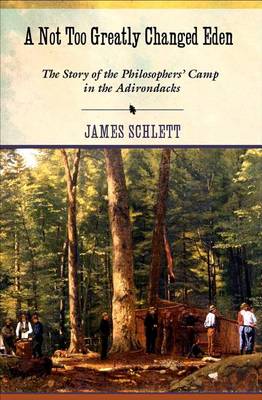9%OFF

Stock image for illustration purposes only - book cover, edition or condition may vary.
A Not Too Greatly Changed Eden: The Story of the Philosophers´ Camp in the Adirondacks
James Schlett
€ 33.99
€ 30.79
FREE Delivery in Ireland
Description for A Not Too Greatly Changed Eden: The Story of the Philosophers´ Camp in the Adirondacks
Hardback. Num Pages: 280 pages, 28, 8 colour plates, 20 black & white halftones. BIC Classification: 1KBB; 3JH; HBJK; HBLL; HBTB. Category: (G) General (US: Trade). Dimension: 169 x 243 x 24. Weight in Grams: 554.
In August 1858, William James Stillman, a painter and founding editor of the acclaimed but short-lived art journal The Crayon, organized a camping expedition for some of America's preeminent intellectuals to Follensby Pond in the Adirondacks. Dubbed the Philosophers' Camp, the trip included the Swiss American scientist and Harvard College professor Jean Louis Rodolphe Agassiz, the Republican lawyer and future...
Read moreProduct Details
Publisher
Cornell University Press
Format
Hardback
Publication date
2015
Condition
New
Weight
553g
Number of Pages
272
Place of Publication
Ithaca, United States
ISBN
9780801453526
SKU
V9780801453526
Shipping Time
Usually ships in 15 to 20 working days
Ref
99-99
About James Schlett
James Schlett is an award-winning journalist whose feature and business writing has been recognized by the New York Newspaper Publishers Association and the New York State Associated Press Association. He lives in Rotterdam, N.Y.
Reviews for A Not Too Greatly Changed Eden: The Story of the Philosophers´ Camp in the Adirondacks
In A Not Too Greatly Changed Eden, James Schlett takes a fascinating and iconic event in New York State and American cultural history and enlightens us about what happened with the motley crew of artists, philosophers, and thinkers who visited the Adirondacks in 1858. I learned much from this book and recommend it to other readers in a variety of...
Read more